Whether you are a novice angler or an experienced one, mastering finesse fishing techniques is essential to elevate your fishing skills. One finesse technique that has gained widespread popularity is the Ned Rig. While originally developed for bass fishing in America, the Ned Rig has proven to be a highly effective setup for targeting perch in the UK. Its versatility extends beyond perch, making it a go-to choice for various freshwater predators. In this comprehensive guide, we will delve deeper into the Ned Rig technique, its effectiveness for perch fishing, and the common mistakes to avoid for optimal results.
Ned Rig for Perch -The Brainchild of Ned Kehde
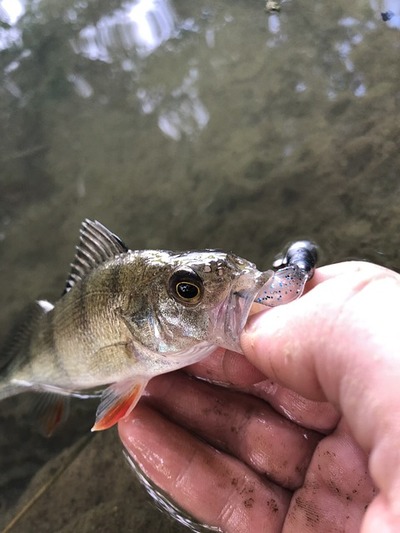
The Ned Rig was designed by Ned Kehde, a seasoned angler from the Midwestern region of the United States. Ned Kehde is not only an accomplished angler but also a veteran writer in the fishing industry. The Ned Rig’s simplicity, consisting of a small jighead and a soft plastic lure, may appear unimpressive at first glance. However, its slow fall and darting action have revolutionised perch fishing, even in challenging fishing conditions.
Fishing can be wonderful for our well-being – Find out how
The Power of the Ned Rig Lure
The secret behind the Ned Rig’s effectiveness for perch fishing lies in its lure design. The combination of a special buoyant material and the unique shape of the jighead allows the lure to stand upright in the water. This characteristic enables easy bouncing and twitching, making it highly enticing for perch and other predatory fish. While various soft plastic lures can be used with the Ned Rig, two popular choices among anglers are the Korum Squirmz and the Zman TRDs. The Zman TRDs, in particular, are considered the pinnacle of Ned Rig lures, offering exceptional performance and durability.
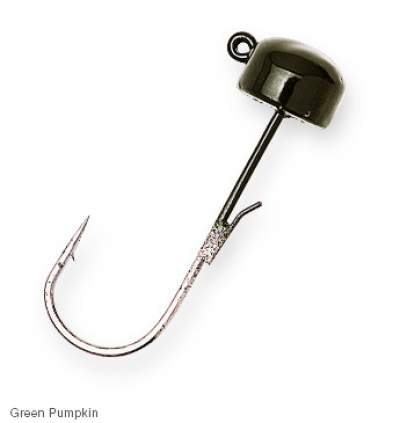
Mistakes to Avoid when Fishing with the Ned Rig
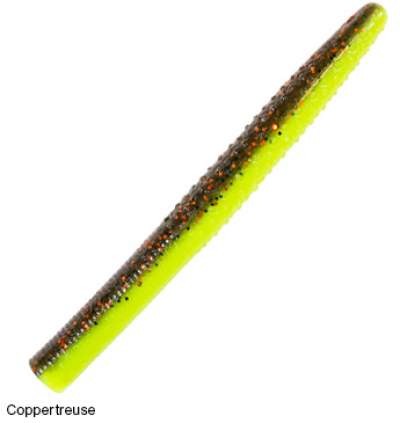
Mistakes to Avoid when Fishing with the Ned Rig
While there are numerous instructional videos available for fishing with the Ned Rig, finding guidance on overcoming challenges and achieving consistent success can be more challenging. To help you navigate potential pitfalls, here are some common mistakes to avoid when finesse fishing with the Ned Rig for perch:
Hooks that are Too Big
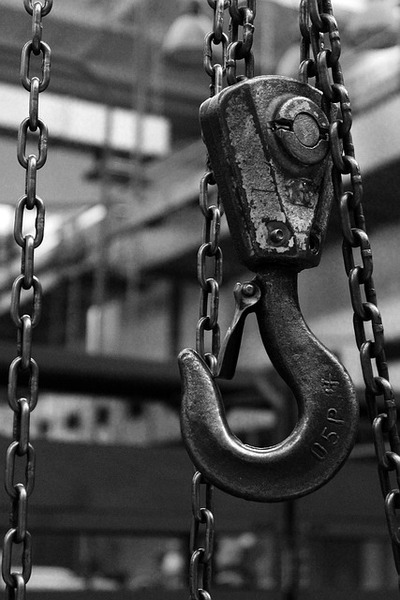
Finesse fishing emphasizes the principle that bigger doesn’t always mean better. When the Ned Rig and its tiny, lightweight hooks were first introduced to the angling community, many skeptics questioned the effectiveness of such small hooks for bass fishing, let alone perch. However, Ned Kehde himself has achieved remarkable success using incredibly small size 6 hooks. It is a common mistake for anglers targeting perch with the Ned Rig to assume that larger hooks are necessary. To optimize your results, stick with size 1 and 2 hooks, and you will begin to see the great potential of finesse fishing for perch.
Tackle that is Too Heavy
One of the fundamental principles of finesse fishing is to employ tackle that is appropriately matched in terms of weight. Light tackle is a crucial requirement for the Ned Rig. Opt for light or medium-light power rods with fast action and a soft tip. These characteristics enhance sensitivity and enable precise control over the bait. When selecting a reel, smaller sizes such as the 1000 or 2000 spinning reels work best with the Ned Rig setup. They are specifically designed to handle fine lines and provide a higher line retrieval rate with each handle turn. Consider using fluorocarbon or light braided lines with a test strength of 10lb or less to maximize casting distance and sensitivity. Additionally, using a light fluorocarbon leader or wire is advisable if pike are present in your fishing area to prevent bite-offs while maintaining finesse.
Using a Jighead that’s Too Heavy
One of the critical aspects of the Ned Rig is utilizing the lightest possible jighead. A lighter jighead reduces the likelihood of snagging on rocks and helps keep the bait from getting entangled in grass, algae, or debris that may be present on the bottom of rivers, lakes, and canals. By opting for a lighter jighead, you enhance the overall finesse of the presentation and increase your chances of enticing perch to strike.
Fishing Too Fast
Finesse fishing relies on a slower presentation to maximize effectiveness. Fishing too fast can cause you to miss out on potential catches. To optimize your chances, practice discipline and patience by allowing the bait to sink to the bottom and deadstick for a moment or two before proceeding to drag, swim, or hop the bait. After each movement, pause and let it sink again, giving the perch ample time to notice and strike.
Setting Hooks Too Hard
Proper hook setting techniques and drag settings are crucial elements of the Ned Rig setup. Given the small, light wire hooks used, it is essential to adjust your drag settings accordingly. Similarly, using the correct hook setting technique is vital to avoid pulled or bent hooks, which no angler wants to experience. When setting the hook with the Ned Rig, reel tight and lean into the fish. By loading up the rod and applying minimal pressure, you can ensure a secure hookset. It is advisable to carry a small hook file to maintain a sharp hook point, as it is vital for effective hook penetration while finesse fishing.
How to Fish the Ned Rig for Perch

Now that you understand the fundamentals of the Ned Rig setup and the common mistakes to avoid, let’s dive into the step-by-step process of effectively fishing the Ned Rig for perch.
Choose the Right Location
Perch can be found in various freshwater environments, including lakes, ponds, rivers, and canals. Look for areas with structure such as submerged rocks, fallen trees, weed beds, and drop-offs. These spots often attract perch and provide them with cover and ambush points.
Select the Appropriate Gear
Optimal gear selection is crucial for finesse fishing with the Ned Rig. Use a light or medium-light power spinning rod with a fast action and a soft tip. This type of rod allows for accurate casts, subtle presentations, and effective hooksets. Pair it with a small spinning reel in the 1000 to 2000 size range. Spool your reel with a low-diameter, high-quality fluorocarbon or light braided line of 10lb test or less. This setup enables you to cast further, detect subtle bites, and maintain excellent sensitivity.
Choose the Right Ned Rig Lure
Select a Ned Rig lure that mimics the natural prey of perch and matches the conditions you are fishing in. Zman TRDs and Korum Squirmz are popular choices due to their realistic profiles and attractive actions. Experiment with different colours to find what works best in your fishing location and water conditions.
Rig the Ned Rig Properly
Start by attaching the Ned Rig lure to a small, lightweight jighead. Thread the soft plastic bait onto the jighead, ensuring it is centered and securely in place. The unique buoyant properties of the Ned Rig lure will cause it to stand upright when resting on the bottom, enticing nearby perch.
Cast and Retrieve
Make accurate casts to your target area, aiming for spots near structure or potential holding areas for perch. Allow the Ned Rig to sink to the bottom, counting down the seconds if necessary to determine the depth you want to fish. Once it reaches the desired depth, start a slow and subtle retrieve. Use a combination of gentle hops, twitches, and pauses to impart lifelike movements to the bait. The slow fall and darting action of the Ned Rig will often trigger the interest and aggression of hungry perch.
Stay Alert and Detect Bites
While fishing the Ned Rig, it’s essential to maintain focus and sensitivity to detect subtle bites. Watch for any line movement, twitches, or changes in tension that may indicate a perch has taken the bait. Stay in constant contact with your lure, as perch often inhale the Ned Rig delicately, requiring swift and precise hooksets.
Set the Hook
When you detect a bite, resist the temptation to strike hard or jerk the rod aggressively. Instead, reel in any slack line and apply gentle but firm pressure by leaning into the fish. The light wire hooks used with the Ned Rig are designed to penetrate easily, so excessive force is unnecessary. Maintain steady tension and allow the rod to absorb any sudden movements or runs made by the perch. With a properly set hook, you’ll have a good chance of landing your prized perch.
Experiment and Adapt
Fishing conditions can vary, and perch may exhibit different preferences from day to day. Don’t be afraid to experiment with different retrieval speeds, depths, lure colours, and presentation styles. Pay attention to what is working and be willing to adapt your approach accordingly.
By following these steps and honing your finesse fishing skills, you’ll increase your chances of success when using the Ned Rig for perch. Remember to enjoy the process, be patient, and appreciate the excitement that finesse fishing can bring.
The Tackle
Please Note:
While we only ever link to tackle and lures that we have used and recommended, the links below are affiliate links. This means that if you click a link and buy the product we may receive a small commission from the retailer (at no extra cost to yourself). Should you choose to use an affiliate link please know that we are extremely grateful and any commission we do receive helps us to maintain the blog.
Selecting the Right Rod for Ned Rig Perch Fishing
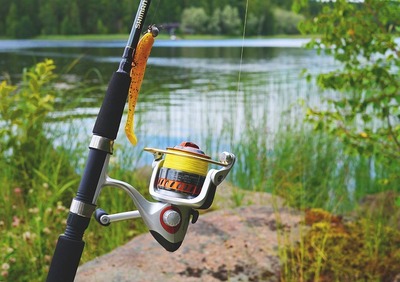
When it comes to choosing the right rod for fishing the Ned Rig for perch, there are various options available, each with its own advantages. One important consideration is the rod’s casting weight, which determines its suitability for finesse fishing techniques. A recommended range for Ned Rig perch fishing is typically 5-15g, as it provides the versatility and sensitivity needed for this fishing style.
Opting for a rod with a casting weight of 5-15g allows for accurate casts, precise lure control, and the ability to handle perch of different sizes. This weight range is well-suited for finesse presentations and helps anglers effectively work the Ned Rig to entice perch strikes. The sensitivity of the rod is crucial for detecting subtle nibbles and bites, allowing anglers to respond quickly and hook the fish.
When selecting a rod, consider its overall construction, including the materials used, its length, and action. A rod with a light and sensitive blank is advantageous for detecting the delicate movements of the lure and the fish’s bites. A length of around 6 to 7 feet provides the necessary leverage and control, while the action should be fast or medium-fast to allow for accurate hook sets.
There are many reputable brands and models available that cater to finesse fishing techniques. Look for rods specifically designed for finesse or light tackle fishing, as they often offer the sensitivity and responsiveness needed for Ned Rig perch fishing. Seek recommendations from experienced anglers, visit local tackle shops, or read online reviews to gather insights and make an informed decision.
Remember, the right rod is just one component of successful Ned Rig perch fishing. Understanding the nuances of the technique, selecting appropriate lures, and having knowledge of perch behavior in your fishing area are equally important. Practice your presentations, experiment with different retrieves, and observe how perch respond to refine your approach.
Investing in a well-suited rod that aligns with your fishing style and preferences will enhance your finesse fishing experience and increase your chances of success when targeting perch with the Ned Rig technique. So, take your time, do your research, and choose a rod that will become your trusted companion on your perch angling adventures.
Choosing the Ideal Reel for Ned Rig Perch Fishing
Selecting the right reel is essential for optimizing your Ned Rig perch fishing setup. The reel should complement the rod, provide smooth and reliable performance, and offer features that enhance your finesse fishing experience. When it comes to the size of the reel, we recommend opting for a range between 1000 and 3000, as these sizes are well-suited for finesse techniques and perch fishing.
The best reels under £100 – See our guide
A reel in the 1000/3000 size range strikes a balance between lightweight design and line capacity. This allows for effortless casting and smooth retrieves while accommodating the fine lines typically used with the Ned Rig setup. The smaller size reels, such as the 1000 size, work particularly well for finesse fishing as they provide better line control, sensitivity, and balance with the lightweight rods commonly used for perch angling.
It’s worth noting that personal preference plays a significant role in choosing the right reel. Some anglers may prefer a specific brand or model based on their previous experiences or the features they prioritize. It’s always beneficial to visit local tackle shops, seek advice from experienced anglers, or conduct online research to gather insights and make an informed decision.
Remember, the reel is a crucial component of your fishing setup, but it’s only one part of the equation. Proper maintenance, including regular cleaning and lubrication, will prolong the life and performance of your reel. Additionally, matching the reel’s capabilities with the appropriate fishing line, leader material, and knot tying techniques will contribute to a successful Ned Rig perch fishing experience.
Investing in a reliable reel that suits your fishing style and budget will enhance your finesse fishing endeavors. Take the time to assess your preferences, consider the specific features you desire, and choose a reel that aligns with your needs. With the right reel in hand, you’ll be ready to tackle perch fishing using the Ned Rig technique and enjoy the excitement of reeling in those elusive perch.
Choosing the Right Braided Line for Ned Rig Perch Fishing
When it comes to lure fishing, using braided line offers several advantages, including enhanced sensitivity, improved casting distance, and increased strength. For Ned Rig perch fishing, opting for a braided line is highly recommended to maximize your fishing experience. Here are some considerations to keep in mind when selecting the right braided line for your Ned Rig setup.
Strength and Test Rating
For Ned Rig perch fishing, a braided line with a test rating of approximately 10lb (pound) is suitable. This strength provides a good balance between sensitivity and durability. The low diameter of braided line allows for better sensitivity, enabling you to detect subtle bites and feel the movement of your lure, which is crucial for finesse fishing.
Abrasion Resistance
Since perch often inhabit areas with structures like rocks, vegetation, and submerged objects, choosing a braided line with high abrasion resistance is essential. This helps prevent the line from fraying or breaking when encountering rough surfaces, ensuring you maintain control over your rig and increasing your chances of landing perch successfully.
River jig fishing can throw up some great fun – Read more now
Casting Performance
Braided lines have a thinner diameter compared to monofilament or fluorocarbon lines of the same strength. This reduced diameter enables smoother and longer casts, allowing you to cover more water and reach distant targets where perch may be lurking.
Knot Strength
Ensure that the braided line you choose offers excellent knot strength. This will prevent slippage or breakage when tying knots, providing you with reliable connections between your line, leader, and terminal tackle.
Visibility
While braided lines typically have a high visibility colour, such as neon green, yellow, or orange, you can also opt for a low-visibility option, such as moss green or dark brown. This can be advantageous when fishing in clear or heavily pressured waters, where a more stealthy approach may yield better results.
When spooling your reel with braided line, make sure to use backing or a monofilament/fluorocarbon leader to prevent slippage on the spool and enhance knot tying efficiency. This combination allows for better line management and provides some shock absorption during intense fights with perch.
Remember to regularly inspect your braided line for signs of wear or fraying and replace it if necessary. By maintaining your braided line, you ensure optimal performance and reduce the risk of unexpected line failures while pursuing perch with the Ned Rig technique.
With a high-quality braided line spooled on your reel, you’ll have the sensitivity and strength needed to detect subtle strikes, maneuver your lure effectively, and land perch successfully. This, combined with the finesse approach of the Ned Rig, will significantly increase your chances of a rewarding perch fishing experience.
Choosing the Right Jig Head for Ned Rig Perch Fishing
One of the key components of the Ned Rig setup for perch fishing is the jig head. The Ned Rig jig head plays a crucial role in the presentation and action of the soft plastic lure. Here are some considerations to help you select the right jig head for your Ned Rig perch fishing adventures.
Weight and Size
When it comes to the weight of the jig head, it’s important to strike a balance. Generally, for perch fishing with the Ned Rig, a jig head in the range of 1.8 to 3.5 grams (1/16 to 1/8 ounce) works well. This weight allows for a slow fall rate, which is ideal for enticing perch to strike. It also helps keep the lure in the strike zone for longer periods.
Shape and Design
The shape and design of the jig head can influence the action and presentation of the soft plastic bait. Opt for a jig head with a compact and streamlined profile. This helps reduce drag in the water, allowing for easier control and manipulation of the lure. Additionally, a jig head with a wide-gap hook ensures better hooking efficiency when a perch strikes.
Hook Size and Style
The hook size should be appropriate for perch fishing with the Ned Rig. Generally, hooks in the range of size 2 to size 4 work well for most Ned Rig applications. However, it’s always a good idea to adjust the hook size based on the size of perch in your fishing area. The hook should be sharp, strong, and ideally made of high-quality materials to ensure reliable hooksets and prevent bending or breakage during fights.
Plug fishing can help you to catch more perch, pike and zander – read our guide
Material and Coating
Jig heads are commonly made of materials such as lead, tungsten, or zinc. Each material has its own characteristics, including density, durability, and cost. Lead and tungsten are popular choices due to their density, which allows for precise casting and better sensitivity. Zinc jig heads offer an alternative for anglers concerned about lead contamination in the environment. Additionally, some jig heads come with durable coatings, such as powder paint or epoxy finishes, which provide extra protection against chips and corrosion.
Colour Selection
Perch are known to respond to a variety of colours, so it’s worth experimenting to find what works best in your fishing location. Natural hues like green pumpkin, brown, or watermelon are often reliable choices. Additionally, consider selecting jig heads with contrasting colours or eyes that can attract perch and trigger strikes.
It’s worth noting that the Ned Rig technique is often associated with using mushroom-shaped jig heads, such as the popular “Mushroom Head” or “Mushroom Jig.” These jig heads offer stability, balance, and an upright presentation for the soft plastic lure, which mimics a small baitfish or creature in distress.
Our guide to lure fishing for pike on rivers is very popular – don’t miss out
As with any fishing tackle, it’s important to experiment and adapt to the conditions and preferences of the perch in your area. Consider starting with a selection of jig heads in different weights, sizes, and colours to determine what elicits the best response from perch. By fine-tuning your Ned Rig jig head selection, you’ll increase your chances of enticing perch to strike and enjoy a successful day on the water.
Lures
Top Lure Choices for Ned Rig Perch Fishing
When it comes to selecting lures for Ned Rig perch fishing, it’s important to choose options that offer the right combination of buoyancy, lifelike action, and enticing colors. The Ned Rig is designed to imitate a feeding or scavenging baitfish, and having the right lure can significantly increase your chances of attracting perch. Here are some of our favourite lure choices for the Ned Rig:
Z-Man TRD
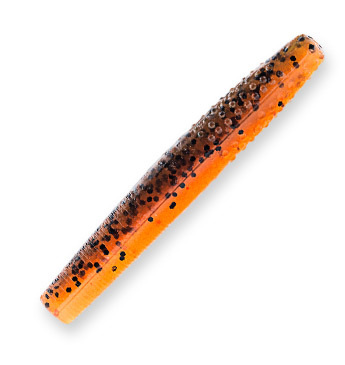
The Z-Man TRD (The Real Deal) is widely regarded as one of the best Ned Rig lures available. It features a unique buoyant ElaZtech material that allows the lure to stand up on the bottom, mimicking a natural feeding baitfish. The Z-Man TRD comes in various colours and is highly durable, making it a go-to choice for many Ned Rig anglers targeting perch.
Korum Squirmz
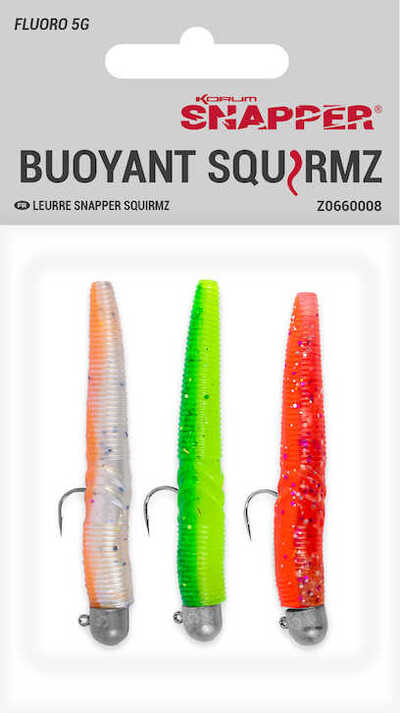
The Korum Squirmz is becoming increasingly popular among anglers using the Ned Rig for perch. These soft plastic lures are designed with a slender body and a realistic worm-like appearance. The Squirmz have a subtle action in the water, and their buoyancy allows them to stand upright, enticing perch to strike. Available in different colour, the Korum Squirmz can be an effective choice for Ned Rig perch fishing.
Gary Yamamoto Senko
The Gary Yamamoto Senko is a classic soft plastic stick bait that can be effectively used with the Ned Rig technique. Although not specifically designed for the Ned Rig, the Senko’s weightless design and unique fall rate make it a versatile lure for targeting perch. The Senko’s subtle wiggling action on the drop can trigger strikes from perch lurking near the bottom.
Ecogear Aqua Straight
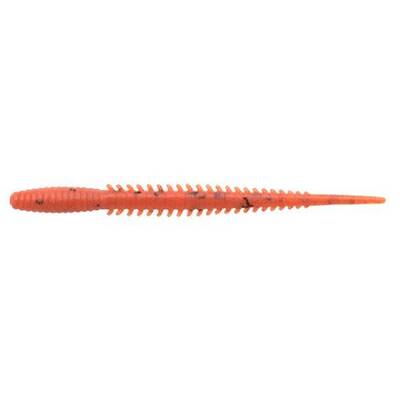
The Ecogear Aqua Straight is a slim-profile soft plastic lure that excels in finesse fishing applications. Its buoyant material and straight design enable it to stand up on the bottom, enticing nearby perch to strike. The Aqua Straight’s natural colors and realistic swimming action make it a reliable choice for Ned Rig perch fishing.
Remember, the key to successful Ned Rig perch fishing is to experiment with different lure options and presentations to find what works best in your fishing location. Pay attention to the water clarity, weather conditions, and the behavior of the perch to make informed decisions about lure selection. Be open to trying new colors, sizes, and brands to determine what triggers the most strikes from perch in your area.
As you gain experience with the Ned Rig technique, you may develop your own preferences and go-to lures for perch fishing. Keep an open mind, adapt to the conditions, and enjoy the process of discovering the lures that consistently produce results with the Ned Rig for perch fishing.
Though every angler has their own style, if you’ve never used a Ned Rig before, or you are having problems using the Ned Rig fishing perch, then these little tips should help you find the success that so many anglers are seeing, and help you to discover why the Ned Rig is growing in popularity when it comes to fishing perch. Let us know how you get on in the comments below.
Enjoyed our post on the Ned Rig? Why not check out the Jika Rig
Why not check out our blog? Or subscribe to the newsletter to find out when a new post lands? You could win a free lure in our monthly giveaway!
Any other suggestions? Leave a comment below or get in touch
PZ

Pingback: The Cheb Rig - A Beginners Guide | Pike & Zander